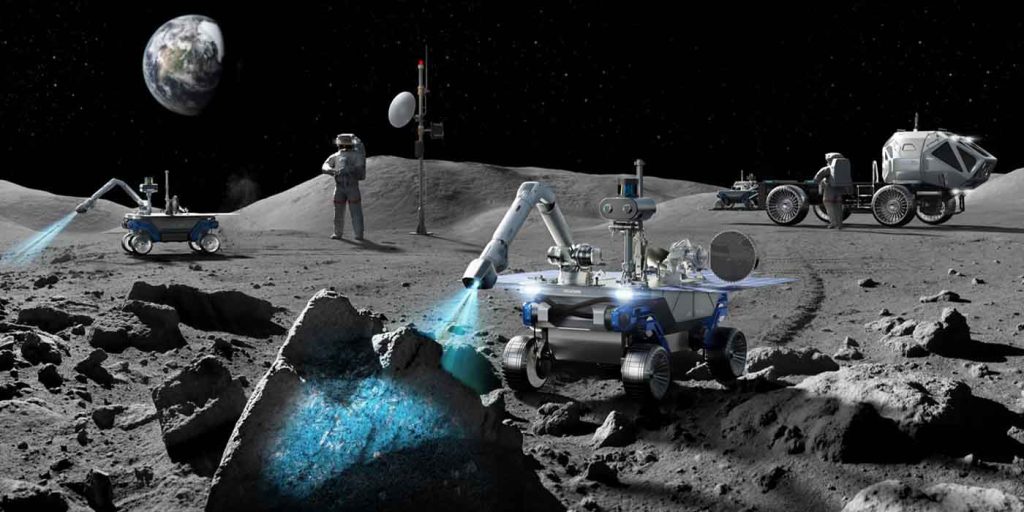
Hyundai Motor Group has shared details of the development of an autonomous lunar exploration rover it is designing with Korean aerospace partners to one day navigate the surface of the moon. The Group is aiming to deliver a launch-capable model utilizing Kia and Hyundai technologies by 2027.
Hyundai Motor Group’s journey beyond the land, sea, and air of Earth dates back to the summer of 2022 when it signed a joint multilateral agreement with six different Korean institutes in the aerospace sector. Combined, the teams have created a consultative entity, working together to develop an autonomous, solar-powered mobility vehicle to support lunar exploration.
This “consultative body” currently includes the Korea Astronomy and Space Science Institute (KASI), Electronics and Telecommunication Research Institute (ETRI), Korea Institute of Civil Engineering and Building Technology (KICT), Korea Aerospace Research Institute (KARI), Korea Atomic Energy Research Institute (KAERI) and Korea Automotive Technology Institute (KATECH).
Hyundai Motor Group looks to combine its robotics and autonomous technologies with the body of aerospace knowledge to first create a “mobility development model” for moon exploration.

Hyundai’s moon rover should begin testing in 2024
According to Hyundai Motor Group, it has decided to begin its journey to the moon with an initial development model at the discretion of its stakeholders. Following tests with the initial rover unit, the Group will then build a launch-capable model that may one day explore our moon.
The Group shared that the rover will be implemented with combined technologies from both Hyundai Motor Group and Kia Corporation subsidiaries, including cameras and LiDAR enabling autonomous capabilities, solar panels and batteries for charging, and electric motors for its drive system.
The Group’s heavy industry division, Hyundai Rotem, will also provide robot manufacturing technology that will be utilized to develop a multipurpose mobility platform for moon exploration and beyond. That upper section of the rover above the HMG components mentioned above will be able to haul scientific payloads and equipment up to 70kg (154 pounds).
Yong Wha Kim, executive vice president and head of R&D planning and coordination center of Hyundai Motor and Kia, spoke:
Hyundai Motor Group has consistently stated its goal is to contribute to expanding human reach and the scope of human mobility experiences. The creation of the lunar exploration mobility development model not only reflects this goal, but also shows our ambition to achieve tangible results in the face of significant challenges. With the rover’s development, we are moving beyond land, sea and air mobility to expand into space mobility.
Before Hyundai’s rover actually gets sent to the moon, the Group says it will conduct mission-based performance tests with the aforementioned development model in an environment that closely mimics the lunar surface.
That testing should lead to further development and refinement that will enable the launch-capable rover, which Hyundai states will be sent to the south pole of the moon, where it will conduct various scientific missions autonomously while powered by the sun. The target for that launch is currently 2027.
Author: Scooter Doll
Source: Electrek



